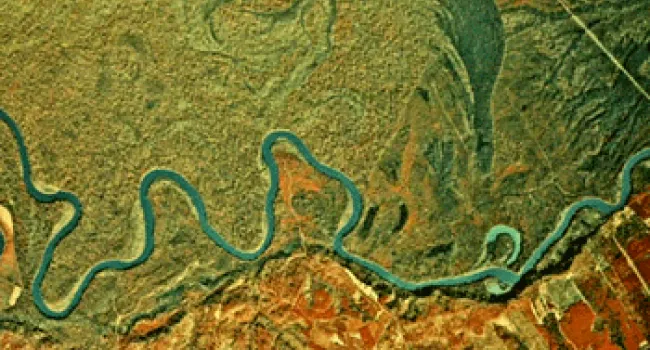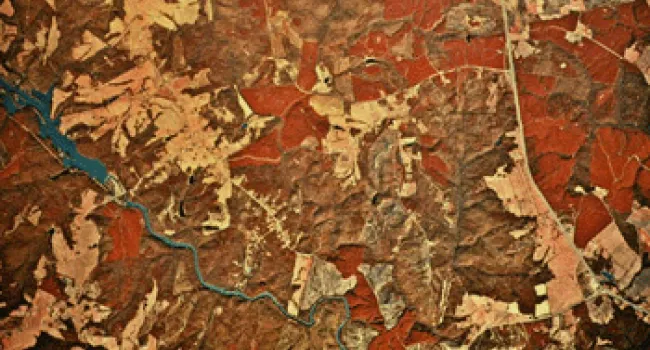
Aerial photograph courtesy of SC Dept. of Natural Resources, Map Lab
Featured Artists: Arianne King Comer | Herb Parker | Tom Boozer
Every year, the beaches, marshes, and other Coastal Zone features of South Carolina attract millions of tourists and billions of tourist dollars. For many, vacationing at the beach is not enough. The palmetto-lined streets, moss covered oaks, and serene inlets of the coast are home to fastest growing population in the state. As the suburban population sprawls, historic cities like Charleston and Beaufort struggle to maintain their identities. The cultural landscape of the coast is shaped by traditions passed down from sea island slaves from west Africa and a history of seafaring and trade. After hundreds of years, coastal seaports still bustle with international trade ships, Navy fleets, fishing boats, and curious visitors.
Landforms
Before entering the ocean, rivers deposit loads of sediment into the Coastal Zone. Water is the most dynamic force at work on this landscape. Inland, silts and mud make up the base of the saltmarsh, creating the perfect environment for marsh grasses. Tides flood the marsh twice a day, mixing fresh and salt water.
Closer to the coast, sandy beaches gradually change shape and location because of tidal, wind, and wave erosion. Barrier islands just off the coast help protect the Coastal zone from wind, waves, tides and hurricanes.
Vegetation
Fresh water marshes, maritime forests, salt marshes and sand dunes distinguish the Coastal Zone area. In fresh water marshes, rushes and cattails thrive near large rivers that flood the wetland area. Wind and salt resistant live oak, palmetto, and wax myrtle populate the maritime forest. Salt marshes of cordgrass (Spartina) and black rushes dominate tidal areas closer to the ocean. Dunes on the outer most part of the Coastal Zone support sweet grass, sea oats, marsh elder, and wax myrtle.
Agriculture
Coastal wetlands in the 18th and 19th century were home to South Carolina’s first agricultural boom. Rice and indigo crops required regular flooding, a condition provided by the periodic influx of the tides. Plantations dotted rivers and marshes, and South Carolina’s economy exploded with exports of rice and indigo.
Markets for indigo and rice dried up in the 20th century, and many plantation lands were developed as industrial, residential, and business areas. Today, efforts to protect the delicate salt marsh habitat limit agricultural use of the Coastal Zone.



